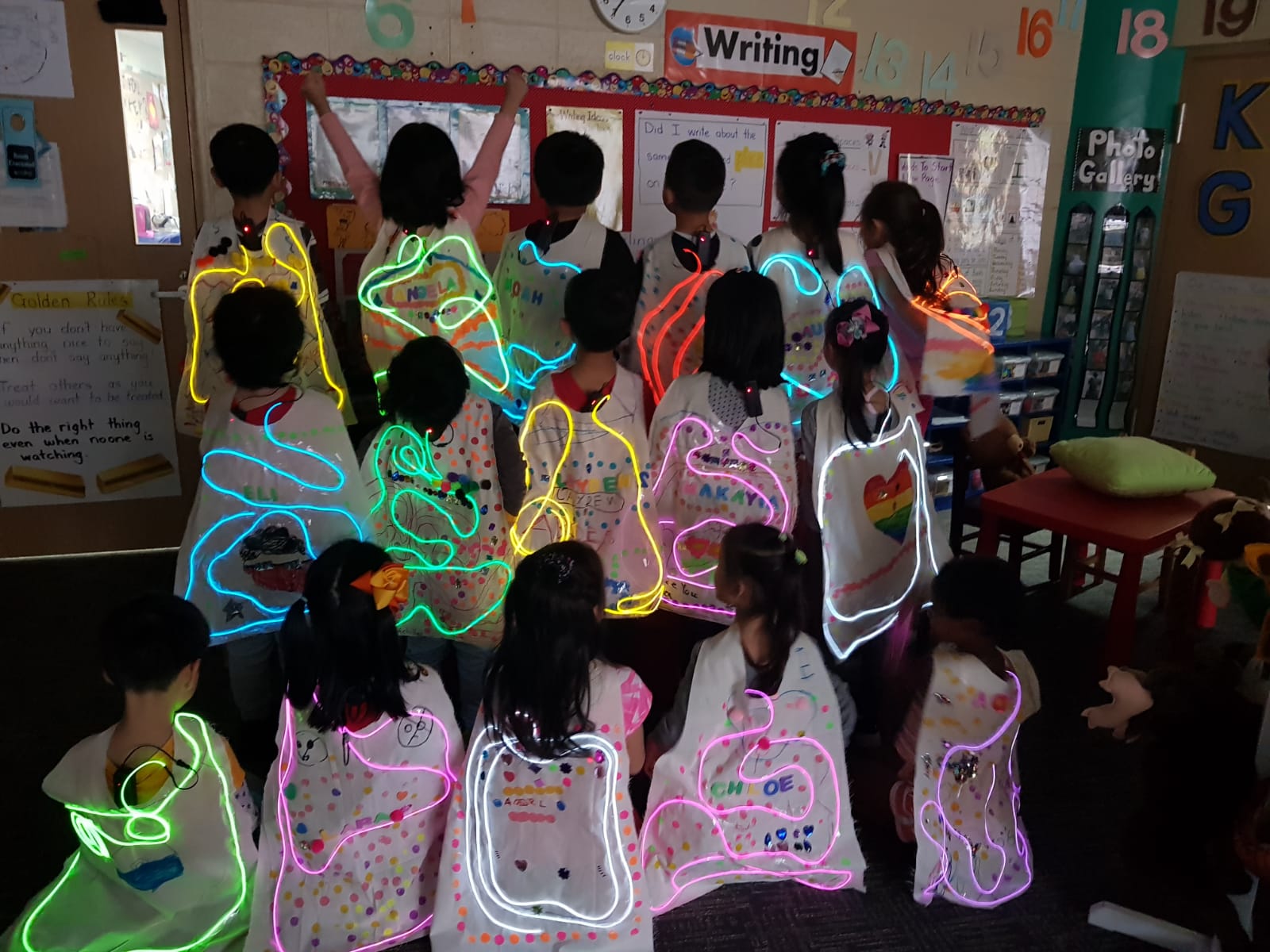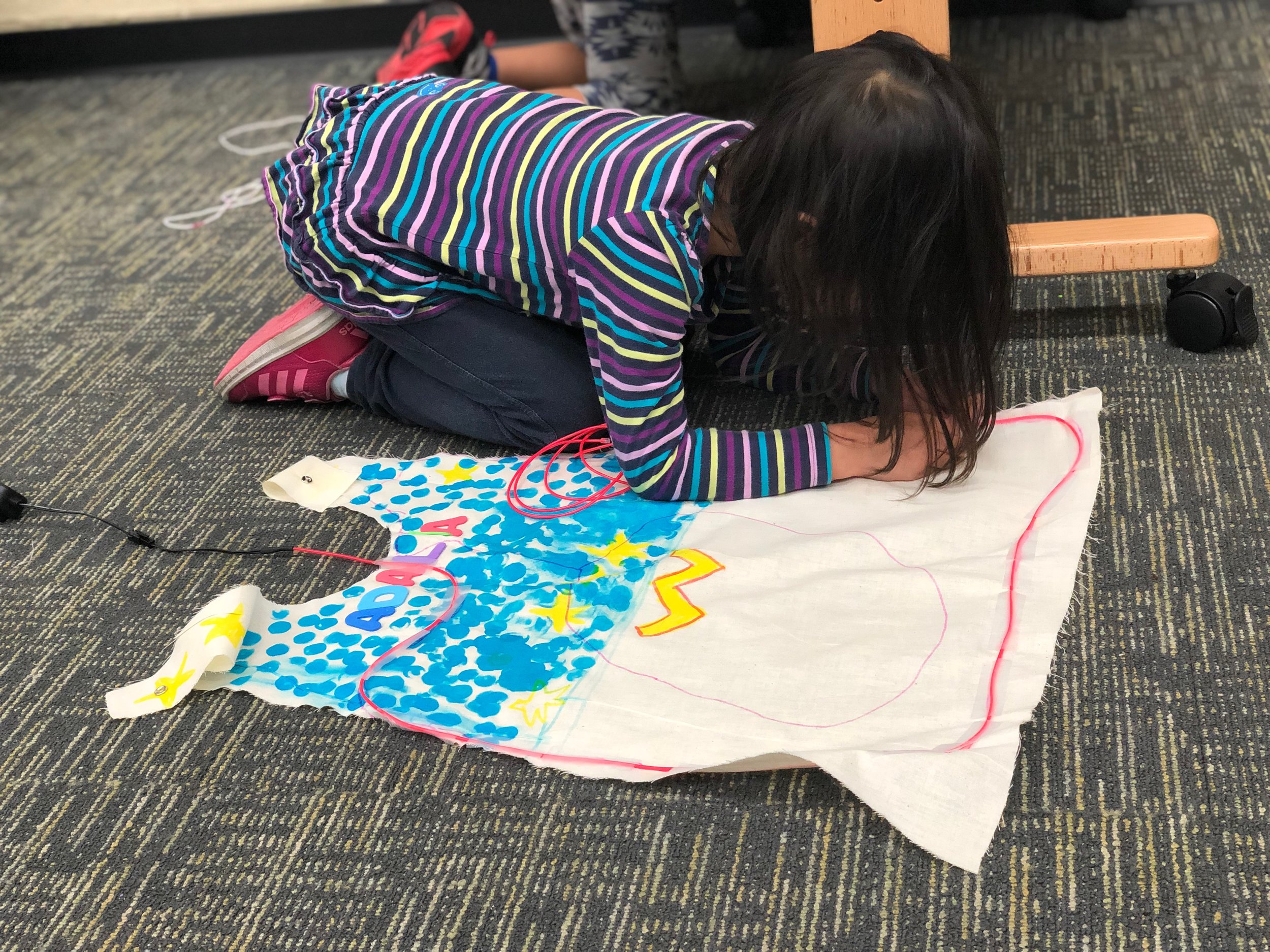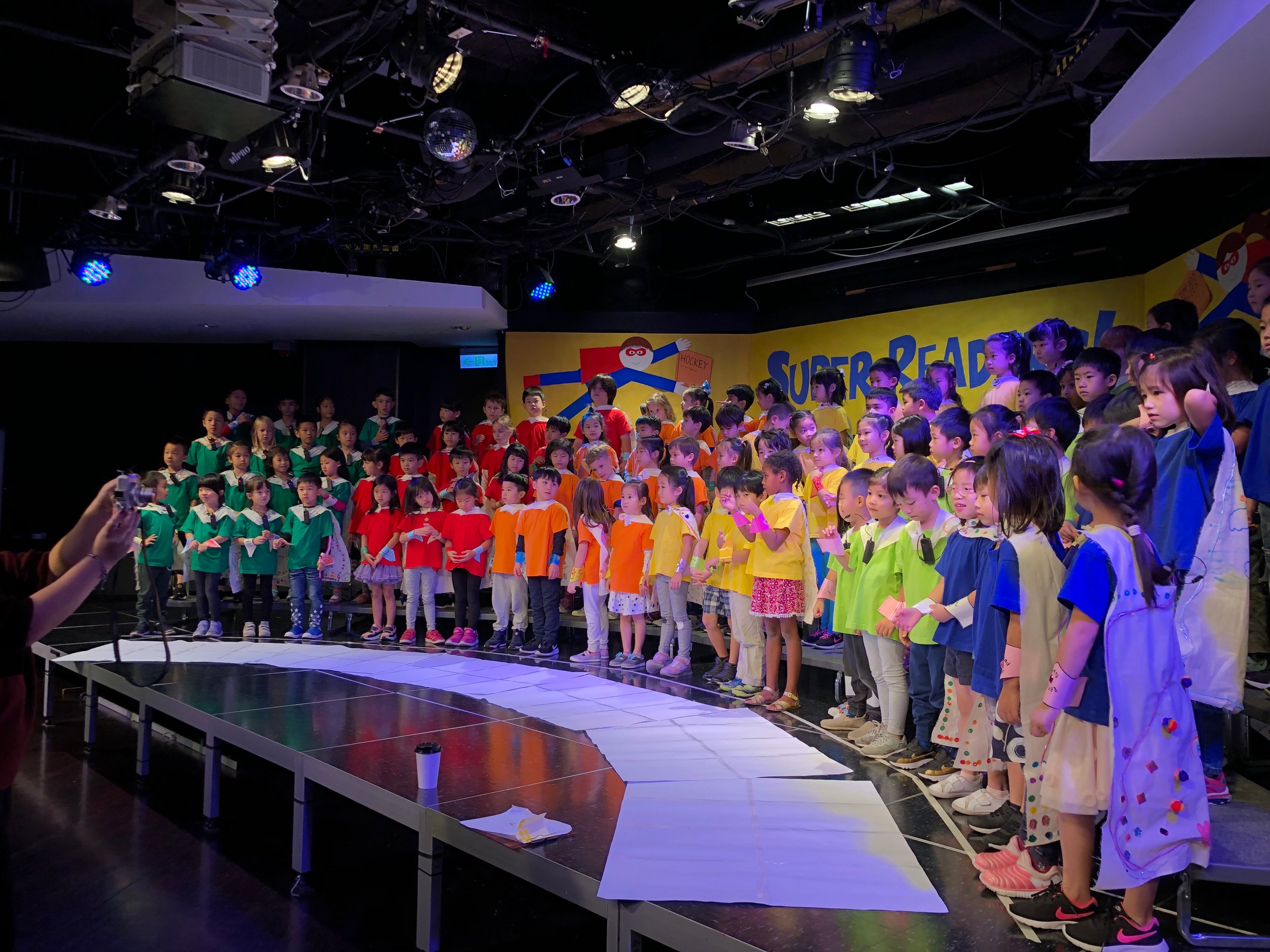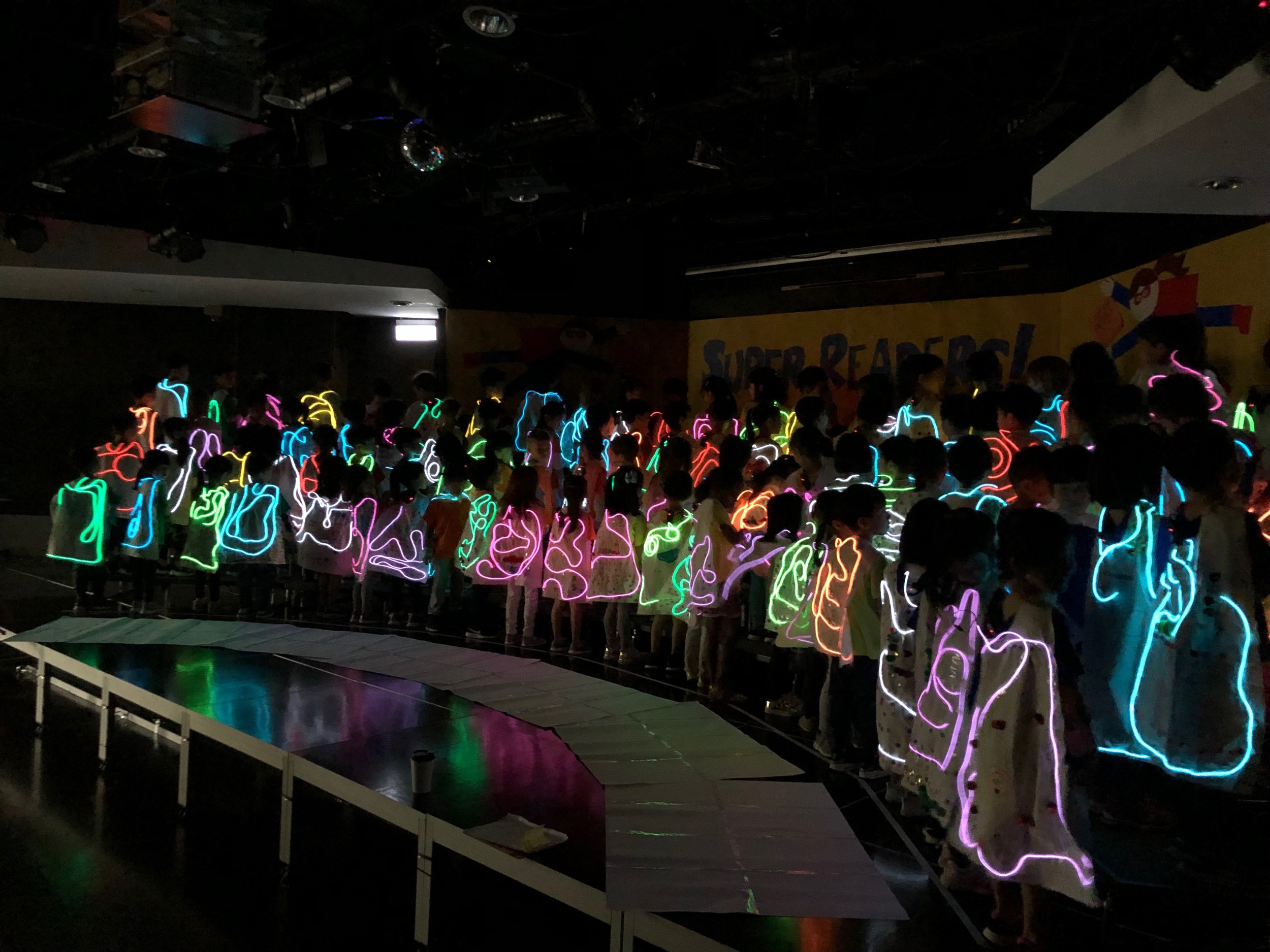Light Up Superhero Capes
Super Readers Deserve Super Capes
Every year our kindergarten students have a superhero themed performance to celebrate all the reading “superpowers” (strategies) they have learned so far. If you are unfamiliar with this unit from the Teachers College Reading and Writing Project (TCRWP), they include reading strategies such as rereading, pointing to the words, or looking for snap words.
As part of this celebration, our students have always made superhero capes to wear as they perform on stage and share their new reading abilities with their parents. This year, I thought we could integrate some STEAM into the creation of these capes and make them light up! The problem was, what could I use that was simple enough for kindergarten students to manipulate themselves? With some help from my awesome colleague Alfredo Papaseit I discovered EL wires!
Figuring out the problems
Now that I had found this simple way to light up the capes, I was tackling my next set of questions:
How could I create a learning experience that allowed my kindergarten students to approach this project as independently as possible?
Were there any curricular areas or skills that could be integrated into the creation of the capes?
The key problem I was trying to solve was figuring out how to attach the wires to the capes so that students could implement it with minimal support. It also had to be quick since I only had a 45 minute class. I tried a variety of things from safety pins to sewing but in the end, clear tape on the muslin fabric used to make the capes seemed secure enough to last the entire celebration. The removal of the tape wasn’t as easy, but more on that later!
For my own curricular purposes, there was a natural link to the Engineering Design Process where we always plan our designs before we begin construction or creation. I also knew that we could highlight ‘A’ in STEAM because we were creating a design for a very clear audience (parents during the celebration), and venue (on stage). I made sure that students were thinking about what might look good on stage, and asked them if their designs could show specific patterns or shapes.
For the planning stage of this project, I provided each of my students a piece of string the same length as the EL wire they would receive. Using that string they had to lay out a design on their cape. One could argue that this was a loose link to non-standard measurement! We taped the start of the string to the point where the battery pack would be (by the nape of the neck) so the students knew they had to start from that particular point in the cape. The second point that was emphasized was that they had to use the ENTIRE string because we were not going to cut the EL wires. This required some problem-solving if they wanted to do a specific design. The next step involved roughly tracing a line along the placement of the string, this wasn’t so easy for the kids but majority got a close approximation. Finally, the string was removed and students taped the EL wire along the line they had traced.
NOTE: The capes were pre-cut from muslin and decorated in class with their homeroom teachers. When they brought the capes to my class they only worked on adding EL wires.
Wrapping Things Up
After the celebration we had to remove the wires because we wanted to keep them for use each year. What we learned was that if you rip off the wire the tape wraps itself around the wire making it even harder to remove. It inevitably happens in a few spots regardless, but to prevent it from happening along the entire length of the wire we had to slowly remove each piece of tape. It was time consuming to say the least. If anyone has ideas for solutions please let me know!
Overall, the effect was impressive on stage and both parents and students loved it! The best part was how students were visibly excited about wearing their light up capes and sharing their super reading powers!





